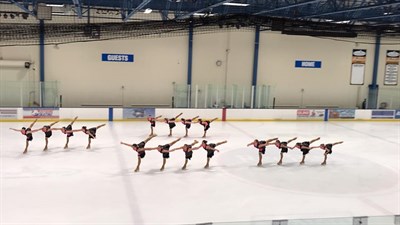Synchronized skating is a team sport in which 5-20 skaters perform a program together. It uses the same judging system as singles, pairs and dance and is characterized by teamwork, speed, intricate formations and challenging step sequences.
As with the other disciplines, all teams perform a free skate with required well-balanced program elements. In addition, teams at the junior and senior level perform a short program consisting of required elements.
Elements in synchronized skating include blocks, circles, wheels, lines, intersections, moves in the field, moves in isolation, no-hold step sequences, spins and pairs moves.
The variety and difficulty of elements require that each team member is a highly skilled individual skater. The typical senior-level athlete has passed a senior or gold test in at least two disciplines.
There are so many benefits to participating in a team sport, and synchronized skating is a great way for figure skaters to compete in a sport they love while enjoying all of the aspects of working with others in a team-oriented sport.
Synchronized teams in the U.S. can compete in many different levels according to the age and skill level of the team members.

